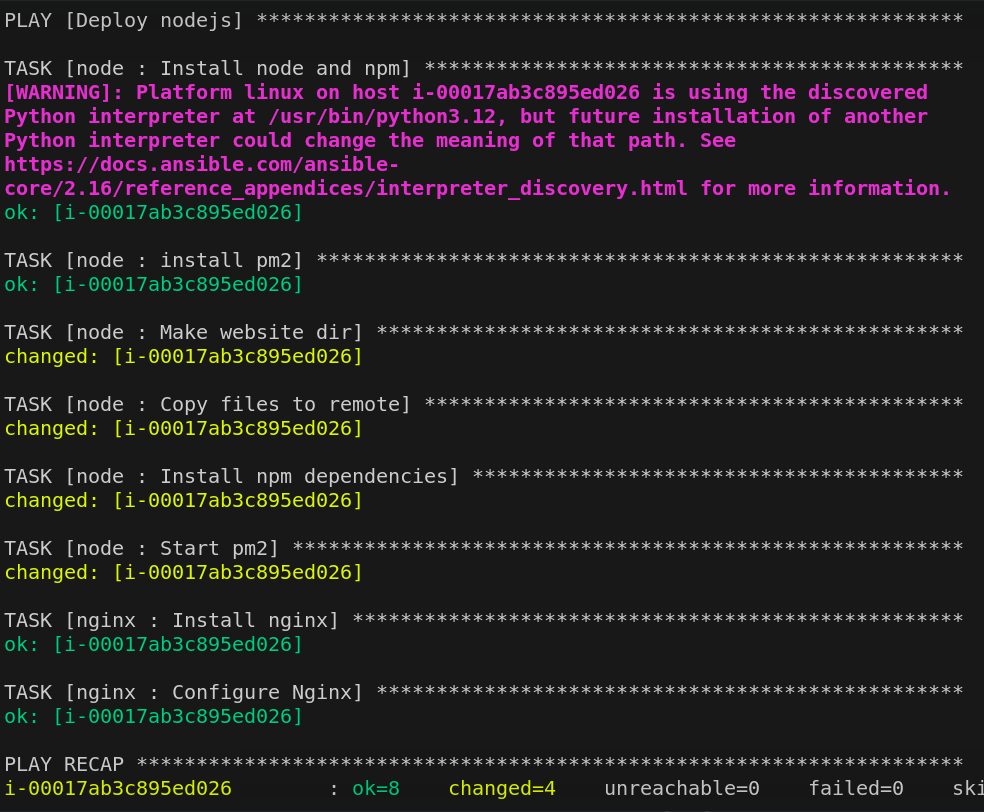Configuring EC2 Instance using Ansible
Last updated: October 23, 2024
Last updated: October 23, 2024
This guide provides detailed steps to configure an AWS EC2 instance using Ansible. It covers dynamic inventories, installing web servers (Nginx/Apache), deploying Node.js/Django applications, and using best practices.
A dynamic inventory dynamically fetches host details during runtime. Use the following configuration for AWS EC2:
plugin: aws_ec2
regions:
- us-east-1
filters:
instance-state-name: running
"tag:owner": ujwal.budha
hostnames:
- instance-id
Enable the plugin in ansible.cfg:
[inventory]
enable_plugins = aws_ec2Below is the file structure used for this setup:
ansible/
├── ansible.cfg
├── aws_ec2.yml
├── playbook.yml
└── roles/
├── nginx/
│ ├── handlers/
│ │ └── main.yml
│ └── tasks/
│ └── main.yml
└── node/
├── tasks/
│ └── main.yml
└── vars/
└── main.yml
The playbook.yml file defines the playbook execution:
---
- hosts: aws_ec2
become: true
gather_facts: true
roles:
- node
- nginx
vars:
ansible_connection: aws_ssm
ansible_aws_ssm_bucket_name: sujata-static-website-one
ansible_aws_ssm_profile: default
- name: Update apt cache
ansible.builtin.apt:
update_cache: yes
- name: Install npm, nodejs
ansible.builtin.apt:
name:
- npm
- nodejs
state: latest
- name: Install nginx
ansible.builtin.apt:
name: nginx
state: latest
- name: Configure Nginx
ansible.builtin.template:
src: nginx.j2
dest: /etc/nginx/sites-enabled/default
notify: restart nginx
server {
listen 80 default_server;
server_name _;
location / {
proxy_pass http://localhost:3000;
}
}
Execute the playbook with the following command:
ansible-playbook -i aws_ec2.yml playbook.yml
and finally to check the output we will visit the public ip of our instance
